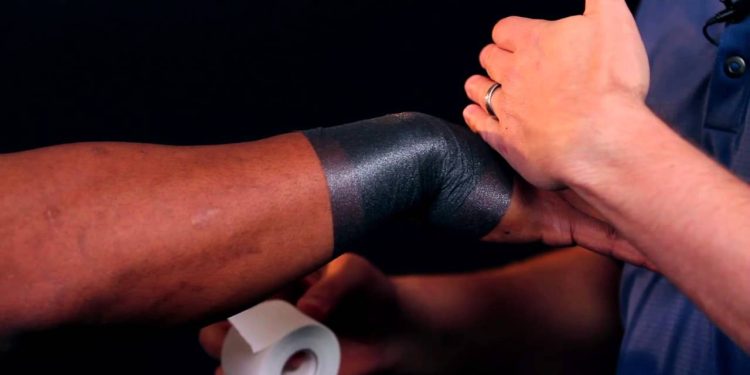There’s something fascinating about the way baseball wrist tape transforms a player’s game. It’s not just about aesthetics or tradition—it’s about comfort and performance. Whether you’re a seasoned pro or just a fan, you might have noticed how many players sport that distinctive wrist tape. But why all the fuss over this simple accessory? Let’s unravel the mysteries of baseball wrist tape.
The History of Wrist Taping in Baseball
Interestingly, wrist taping isn’t a new phenomenon. It dates back to the early 1900s when players sought additional support for their wrists during grueling games. Over the decades, as the game evolved, so did the methods and materials of taping. From cloth bandages to modern elastic tapes, the journey of wrist taping mirrors the broader technological advancements in sports gear.
Why Do Baseball Players Use Wrist Tape?
Frankly speaking, wrist taping is about more than just looking cool. Players use it for several practical reasons:
- Support: Taping provides additional support, reducing the risk of strain or injury.
- Performance: It helps maintain proper wrist alignment, crucial for batting and throwing.
- Comfort: Taping offers a personalized fit, which can make all the difference on the field.
Some athletes swear by tape, claiming it gives them a psychological edge—almost like a lucky charm.
The Material Matters – Tape Options and Preferences
Here’s the thing: not all tapes are created equal. Choices range from traditional cotton tapes to modern elastic variants. Each has its pros and cons.
Did you know that many players prefer elastic tapes for their flexibility and durability? On the other hand, cotton tapes are softer and less abrasive on the skin. It often boils down to personal preference and specific needs. Here’s a brief comparison:
| Material | Flexibility | Comfort | Durability |
|---|---|---|---|
| Elastic | High | Moderate | High |
| Cotton | Low | High | Low |
How to Tape Your Wrist for Baseball
Taping your wrist might seem like a no-brainer, but there’s an art to it. Follow these steps for effective taping:
- Start with clean, dry skin.
- Use pre-wrap to protect your skin.
- Apply the tape with consistent tension.
- Avoid wrapping too tightly; you should maintain full flexibility.
By the way, always seek advice from a coach or a physical trainer if you’re unsure about the technique.
Benefits of Using Wrist Tape on the Field
It might surprise some, but wrist tape can significantly impact a player’s performance. First, it enhances wrist stability, which is crucial when hitting or fielding. It also distributes pressure more evenly, helping prevent injuries like sprains or strains. These small margins can be game-changers in high-stakes moments.
:max_bytes(150000):strip_icc()/riptonedwristwraps-f007ddac01074052b873af021051ebcd.jpg)
Common Misconceptions about Wrist Taping
There’s a whirlwind of myths around wrist taping. One of the biggest misconceptions is that it’s purely decorative. While some players might use colored tapes for team spirit, the primary function remains support and protection. Another myth is that it’s only for injuries—whereas, in reality, it’s also about prevention.
Tips from the Pros: Getting the Most from Your Wrist Tape
You’ve seen the stars do it; now here’s how you can learn from them. Pros always emphasize:
– Consistency: Taping should be consistent in thickness and tension.
– Rotation: Switch up how you tape occasionally to avoid developing adversities or skin irritation.
– Feedback: Listen to your body. If something feels off, adjust accordingly.
Frequently Asked Questions
Why does my tape lose its grip during the game? Over-tightening or poor-quality tape can cause this. Choose good, breathable materials and ensure proper technique.
How often should I replace my wrist tape? After every game or practice session to maintain hygiene and effectiveness.
Is there a psychological aspect to wrist taping? Absolutely. For many, it’s about ritual and a feeling of preparedness—it’s part of their game routine.
Conclusion
Honestly, understanding the intricacies of baseball wrist tape sheds light on how small details can make big differences. As you watch your next game, remember the blend of tradition, utility, and personal preference in that simple strip of tape. Thanks for reading—check out more articles on our website for deeper insights into the sports world.
| Aspect | Elastic Tape | Cotton Tape |
|---|---|---|
| Adaptability | High flexibility for dynamic movements | Great for light, static support |
| Usage Frequency | Multiple games | Single game sessions |
| Skin Sensitivity | May cause irritation when used frequently | Gentler on sensitive skin |















